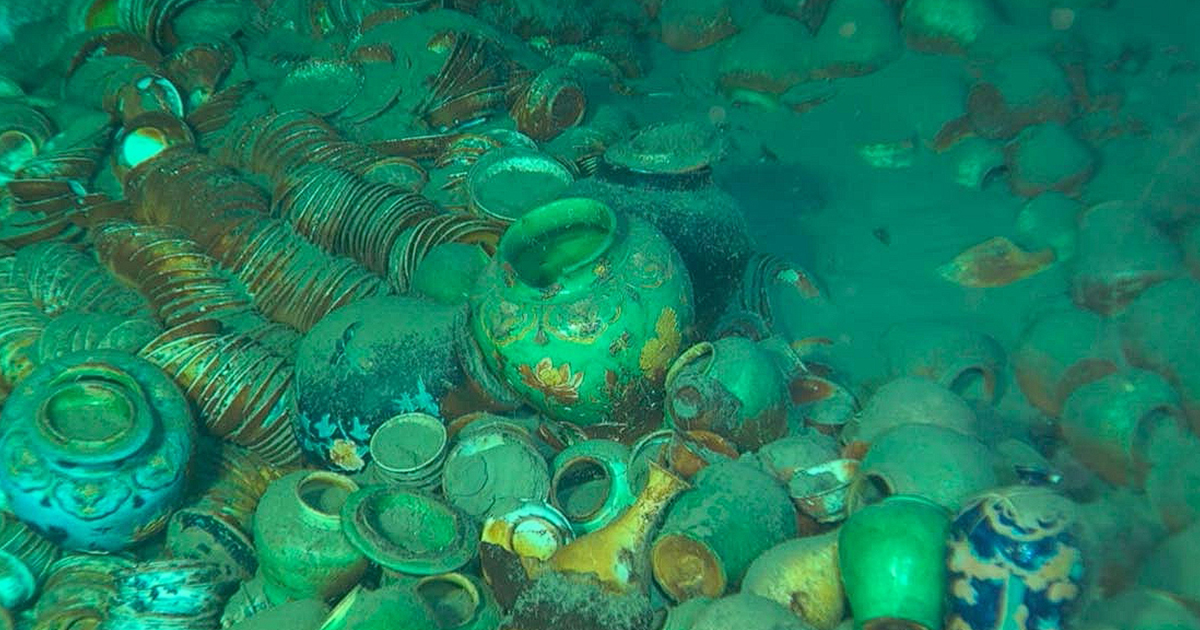Introduction:
Beneath the vast expanse of the ocean lies a treasure trove of history waiting to be discovered. The Ming Dynasty, known for its maritime achievements, holds a significant place in the annals of China’s seafaring past. In recent years, the unearthing of Ming Dynasty shipwrecks has captivated archaeologists and history enthusiasts alike, offering a rare glimpse into a bygone era. These remarkable discoveries shed light on the thriving maritime trade, technological advancements, and cultural exchanges that characterized this remarkable period of Chinese history.
Uncovering Sunken Secrets:
The Ming Dynasty (1368-1644 CE) marked a turning point in China’s naval prowess. It was during this time that Emperor Zhu Di commissioned an impressive fleet of ships, known as the “Treasure Fleet,” to embark on expeditions to distant lands, forging diplomatic ties, engaging in trade, and showcasing Chinese power. However, as fate would have it, some of these vessels met with unfortunate ends, sinking to the depths of the sea, their stories lost to time.
Thanks to the relentless efforts of marine archaeologists, numerous Ming Dynasty shipwrecks have been located and excavated in recent decades. Among the most renowned discoveries are the Nan’ao One and the Wanli Shipwreck, both of which have provided invaluable insights into the seafaring techniques, trade networks, and cultural interactions of the era.
The Nan’ao One:
Discovered off the coast of Nan’ao Island in 2007, the Nan’ao One is an extraordinary Ming Dynasty shipwreck that has astonished researchers with its well-preserved artifacts. Believed to have sunk around 1550 CE, this merchant’s vessel was carrying a cargo of ceramics, precious metals, and luxury goods. The excavation yielded over 23,000 artifacts, including intricately crafted porcelain, copper coins, and exquisite gold jewelry. The ship’s structure itself revealed the Ming Dynasty’s advanced shipbuilding techniques, with its robust keel and double-layered hull designed for long-distance voyages.
The Wanli Shipwreck:
Another compelling discovery, the Wanli Shipwreck, was found off the coast of Malaysia in 2008. Dated to the late 16th century, this well-preserved shipwreck showcases the Ming Dynasty’s expansive maritime trade network. Excavations revealed an astounding array of goods, including blue-and-white porcelain, ceramics, bronze cannons, and even remnants of tea leaves. The presence of these artifacts suggests extensive trade routes between China, Southeast Asia, and the Middle East. Additionally, the ship’s cargo holds held the remains of several crew members, providing valuable insights into the daily lives and experiences of those who sailed the high seas during this era.
Implications and Significance:
The discovery and excavation of Ming Dynasty shipwrecks hold immense historical and cultural significance. These submerged time capsules offer a unique window into China’s maritime activities, its vibrant trade networks, and its interactions with neighboring regions. They also highlight the technological advancements of the Ming Dynasty, such as shipbuilding techniques, navigational instruments, and cargo storage methods.
Furthermore, these shipwrecks illuminate the multifaceted nature of the Ming Dynasty’s global engagements. They underscore the flourishing trade routes that connected the East with the West, fostering cultural exchanges, economic growth, and diplomatic ties. The artifacts retrieved from these sunken vessels not only provide material evidence of these exchanges but also enrich our understanding of the artistic and technological achievements of the time.
Preserving the Past for the Future:
The exploration and excavation of Ming Dynasty shipwrecks present several challenges. The delicate nature of the artifacts, the corrosive effects of saltwater, and environmental concerns necessitate meticulous preservation techniques. Collaborative efforts between archaeologists, historians, and conservationists are crucial in ensuring the long-term protection and study of these invaluable relics.
Conclusion:
The recovery of Ming Dynasty shipwrecks is an ongoing endeavor that continues to unlock the secrets of China’s maritime heritage. These submerged time capsules provide a tangible connection to a bygone era, allowing us to piece together the grand narrative of the Ming Dynasty’s seafaring exploits. As the exploration of the ocean’s depths progresses, we can anticipate further revelations that will broaden our understanding of ancient civilizations, their global interactions, and the enduring legacy of the Ming Dynasty.

27 thoughts on “Unveiling the Mysteries of the Ming Dynasty Shipwrecks”
Comments are closed.